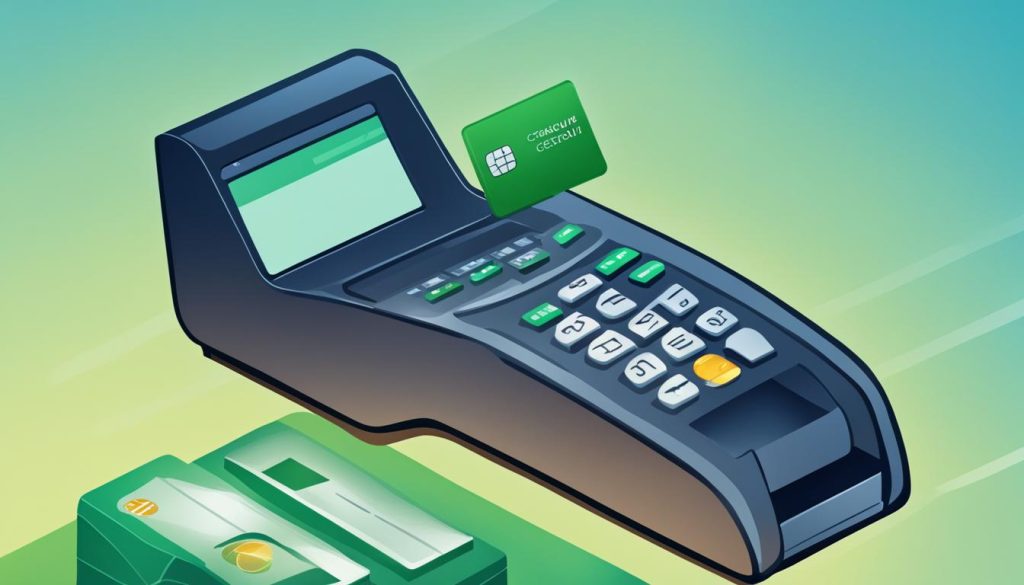In today’s expanding global marketplace, your business’s growth and the satisfaction of your international clientele hinge on the efficiency and security of your payment and shipping options. With the dramatic surge in international trade, the complexities of cross-border transactions warrant a strategic approach to enhance user experience through checkout optimization and bolster conversion rates. Payment security and shipping speed are not mere conveniences but essentials to maintain confidence and competitiveness in a landscape where immediacy and trust are paramount.
To thrive amidst these demands, familiarise yourself with the myriad of payment systems, discern the best shipping partners, and optimise your payment and shipping processes to align with international standards and consumer expectations. Grappling with fluctuating exchange rates, varying regulations, and transaction fees can seem daunting. However, modern solutions like real-time payment systems and efficient logistics can turn these challenges into opportunities for creating smoother transactions.
Key Takeaways
- Optimising your checkout process can considerably enhance user experience and conversion rates.
- Implementing stringent payment security measures is critical to fortify trust and prevent fraud.
- Swift shipping options are essential to meet customer expectations and streamline the supply chain.
- Selecting the right payment and shipping methods can result in significant cost efficiencies and a global competitive edge.
- Digital payment solutions like virtual cards and mobile wallets are reshaping financial transactions with speed and reduced costs.
- Regularly revisiting and adapting your payment and shipping strategies are vital to keeping pace with evolving market trends.
Understanding E-commerce Payment Systems
The vast landscape of e-commerce payment systems is constantly expanding, and your understanding of it is crucial for making informed decisions on which methods to integrate into your business. In the rapidly evolving marketplace, where the expected transaction volume is set to skyrocket, knowing the nuances of these systems will empower you to deliver a seamless checkout experience to your customers.
The Role of Digital Wallets in Enhancing User Experience
Digital wallets have swept through the e-commerce sector, offering a preferable alternative to traditional payment methods. Their unparalleled convenience and improved security features are crucial in increasing transaction speed, providing a competitive edge by addressing the ever-growing demand for efficiency and safety in online purchases.

Credit and Debit Cards: A Dual Edge in Online Transactions
Despite the shifting trends, credit cards and debit cards continue to uphold their stance as pivotal components of e-commerce payments—accepted widely and enforced with stringent fraud protection. Their duality serves consumers who seek both the familiarity of traditional banking and the protection against unauthorised transactions.
Bank Transfers: The Impact of Direct Account Payments
For significant transactions, particularly those that span across borders, bank transfers remain a bastion of e-commerce payments. These direct account payments cut down on intermediary fees and provide a clear, trackable method of transaction, which is crucial for maintaining transparency in business dealings.
Emerging Trends: BNPL and Cryptocurrency Uptake
Emerging payment models, like BNPL schemes and cryptocurrencies, are carving out their own niche in the e-commerce payment ecosystem. While they each come with distinct challenges, their growing acceptance underscores a market that values diverse and adaptable payment gateways, in line with evolving consumer behaviour and expectations.
Best Practices for Payment and Shipping Options
In the fast-paced world of e-commerce, user experience and checkout optimization are the cornerstones of building a successful online retail platform. You must focus on the customer journey from start to finish, ensuring your engagement strategies not only attract but also retain customers. By adopting these best practices, you will likely notice an uplift in conversion rates.
Optimising Checkout Flow for Higher Conversion Rates
Consider the checkout flow as the final hurdle in the e-commerce race – to win, it must be hurdle-free. The first step is reducing the number of steps to purchase, creating a straightforward journey that doesn’t weary the customer. Offering guest checkout options can also prevent drop-offs that occur when setting up an account appears too time-consuming. Remember, the easier the process, the higher the likelihood of purchase completion.
Trust Signals and Payment Security Measures
Building trust is critical, especially when dealing with financial transactions. Customers need assurance that their information is handled securely. Displaying trust signals, such as SSL certificates, trusted payment badges, and straightforward return policies, can significantly allay customer apprehensions. Furthermore, robust payment security must be in place to protect against fraud and breaches, which reinforces customer confidence in your brand.

Mobile Optimisation: Catering to the On-the-Go Consumer
With an increasing number of transactions being made on smartphones, mobile optimization is no longer optional. Your website must offer a seamless, fast-loading, and navigation-friendly mobile experience. By doing so, you cater to the on-the-go consumer, providing them with the flexibility to shop anywhere, at any time, thus fostering a more inclusive and accessible shopping environment.
Below is a comparative table that highlights the key facets of optimal payment and shipping practices:
| Aspect | Best Practice | Outcome |
|---|---|---|
| Checkout Steps | Minimise steps and offer guest checkout | Higher conversion rates due to ease of use |
| Trust Indicators | Display security badges and clear returns policy | Increased customer trust and reduced cart abandonment |
| Payment Options | Diversify payment methods to include digital wallets, cards, and bank transfers | Better user experience catering to varied customer preferences |
| Mobile Experience | Ensure a responsive design with quick load times | Enhanced engagement with mobile users leading to increased mobile sales |
By focusing on these areas, you not only improve the checkout experience but also demonstrate a commitment to providing a secure and convenient shopping platform. Adopt these practices and watch your business thrive as it offers a streamlined and reassuring journey for your customers.
Maximising Transaction Speed for Customer Satisfaction
Within the intricate web of the modern marketplace, the sheer transaction speed plays a pivotal role in fostering both supply chain efficiency and customer satisfaction. When you consider the importance of sustaining momentum in the transfer of capital and services, it is clear that businesses prioritising swift card transfers and seamless B2B payments are positioned at the vanguard of commercial success. By fine-tuning your payments platform to champion velocity, you not only keep the cogs of commerce well-oiled but also uphold client contentment.

The adoption of advanced technologies in payment systems is not merely a trend; it is the cornerstone upon which modern supply chains are stabilised. It is about creating a panorama where time equates to currency, and each second saved through enhanced transaction processes translates to tangible competitive advantage. A robust payments platform becomes an investment in the resilience of your business relationships, ensuring your B2B interactions are not only successful but also perpetually streamlined for the demands of a digital era.
The following table outlines key attributes that a high-speed transactions platform should offer, ensuring that you remain at the forefront in meeting your customers’ expectations for prompt payment processing:
| Feature | Impact on Transaction Speed | Impact on Customer Satisfaction |
|---|---|---|
| Real-time Payment Processing | Eliminates transaction lag | Heightens trust and reliability |
| Automated Clearing | Reduces manual intervention | Improves transaction consistency |
| Integrated Payment Systems | Streamlines workflows | Enhances the user-experience with efficiency |
| Digital Ledger Technology | Minimises processing load | Promotes transparency and traceability |
| Mobile Payment Optimisation | Facilitates on-the-go transactions | Addresses the needs of the mobile-centric user |
It’s imperative to recognise that an increase in transaction speed should never compromise the security nor the accuracy of your payments platform. Rapid transaction handling coupled with absolute precision is the golden mean – a standard that your business must strive to achieve for the sake of your customers and your own operational excellence.
Shipping Methods that Improve the Customer Journey
When it comes to enhancing the customer journey in e-commerce, one cannot underestimate the importance of selecting optimal shipping methods. The efficiency of order processing, the reliability of shipping partners, and the provision of clear tracking information, all converge to shape the consumer’s experience. This invariably influences their feedback and future buying decisions, making each aspect of shipping crucial to the success of the online retail process.

Choosing the Right Shipping Partner
Embarking on the customer journey, the choice of a shipping partner can mean the difference between timely delivery and unexpected delays. To ensure customer contentment and bolster the conversion funnel, it’s essential to collaborate with shipping partners known for their swift and dependable service. Consider their historical performance, customer feedback, and compatibility with your specific shipping needs to make an informed decision.
Effect of Shipping Speed on Conversion Funnel
The pace at which orders are processed and dispatched can dramatically affect where a customer lands in the conversion funnel. Quick shipping methods can enhance the likelihood of first-time purchases and encourage repeat business, whereas slow delivery times may deter potential sales and harm customer loyalty.
Transparent Tracking: Keeping Customers Informed
Transparent tracking systems empower customers with real-time updates, building trust and managing expectations effectively. This transparency reassures customers that their orders are on the move and contributes to a more favourable shopping experience. Regularly updating tracking information can also reduce customer service queries, allowing for a smoother order processing cycle.
Minimising Shipping Costs Without Compromising Quality
In an effort to surpass customer expectations whilst diligently attending to the bottom line, it’s imperative for businesses to intricately balance the goal of cost-efficiency with the unwavering commitment to quality. Keeping shipping costs in check is a pivotal part of maintaining operational sustainability and securing the appreciation of your clientele.

Strategies for Reducing Operational Overheads
Underpinning efficient business operations, reducing operational overheads serves as the first step towards accruing tangible cost savings without compromising the quality of service provided to the customer. This entails a thorough examination of your current expenses and streamlining processes wherever redundancy occurs. Harnessing technology for task automation, negotiating better rates with shipping partners, and embracing energy-efficient practices are just a few pathways to lowering overheads.
Utilising Bulk Shipping and Warehouse Management
Essential to achieving logistical efficiency, bulk shipping avails economies of scale that can drastically decrement shipping costs. It’s a strategic move that can lead to negotiated discounts with carriers and less frequent, but larger, shipments. Aligning with this, adept warehouse management dictates the pace at which goods transition from storage to the customer. Advanced inventory systems, strategic layout design, and disciplined staff training all coalesce to drive proficient warehouse operations.
- Optimising inventory to reduce carrying costs
- Automating warehouse processes for faster order fulfilment
- Consolidating shipments to maximise space utilisation
Together, these measures productively reduce costs while fostering customer satisfaction through timely and reliable delivery services.
Designing a User-Oriented Payment Interface
When you’re implementing a payment gateway design, the focus should consistently be on the user experience (UX). The goal is to create a seamless customer journey from the moment a potential buyer lands on your site, right through to the final confirmation of their purchase. An optimally designed user interface (UI) doesn’t just facilitate a smoother transaction, it also lays the foundation for repeat business.
A well-crafted UX/UI design in the context of payment interfaces ensures that website navigation is intuitive, guiding users through the payment process with ease and without causing confusion or frustration. Let’s talk about some of the key attributes of a user-friendly payment interface:
- Simplicity is paramount. A clean layout with clear calls to action and minimal distractions helps users focus on completing their transactions.
- Clear navigation steers the customers through each step of the checkout, making certain they feel in control and assured at every juncture.
- An aesthetically appealing interface aligns with your brand and enhances the overall shopping experience, promoting customer satisfaction.
By integrating these elements into your payment interface design, you’re not just streamlining the process – you’re also instilling trust and building a professional image. Remember, the checkout stage is critical; it’s where your sales are finally made. Securing this part of the customer journey with a refined user interface will contribute to your site’s effectiveness in converting browsers into buyers.
Consider the following when designing your payment interface:
- Responsive design that ensures functionality across different devices and screen sizes, acknowledging the diversity of user access points.
- Efficient form fields that only ask for necessary information, making the payment submission process quicker and less tedious.
- Reassuring security features that are visible, projecting confidence that customer data is handled with the utmost care.
Ultimately, investing in a top-notch UX/UI design for your payment interface can markedly enhance the effectiveness of your website navigation and contribute to a positive user experience, which is often the deciding factor in a customer choosing to return to your business in the future.
Form Efficiency and Guest Checkout Options
In today’s digital marketplace, improving form efficiency and incorporating guest checkout features are central to enhancing your checkout flow and securing conversions. By focusing on these aspects, you will minimise session duration and refine the overall user experience on your e-commerce platform.
Reducing Session Duration Through Simplified Forms
Simplifying the data entry process with efficient forms significantly reduces the time consumers spend on your site, particularly during the checkout phase. This is a key consideration in website improvements, as shorter sessions typically lead to increased customer satisfaction and better conversion rates. Incorporating user feedback into form design ensures that the information requested is exactly what’s needed, eliminating unnecessary complexity.
The Advantages of Offering a Guest Checkout Experience
While regular accounts can offer personalised experiences, guest checkout options cater to users who desire a quick transaction. This feature eliminates the obstacle of mandatory account registration, efficiently addressing concerns of first-time visitors who may be hesitant to commit to account creation. A streamlined guest checkout process reaffirms form efficiency, enhancing your checkout flow and potentially boosting sales.
Analysing Website Analytics for Checkout Optimisation
In today’s digital marketplace, your website acts as the pivotal point where consumer interest transforms into tangible sales. A core component of maximising conversion lies in meticulously analysing website analytics. Through this lens, you can scrutinize visitor behavior to gain actionable insights that drive checkout optimization. Reflecting on performance metrics, you can carve out effective engagement strategies, refining the checkout journey to bolster customer retention and inflate your sales figures.
Consider the wealth of data at your disposal: session durations, bounce rates, and conversion percentages. They each tell a story of user engagement and satisfaction. However, to translate this data into actionable information, you must adopt a structured approach to its analysis. The following table exhibits key performance metrics crucial for shaping an optimised checkout process.
| Metric | Description | Impact on Checkout Experience | Actions for Improvement |
|---|---|---|---|
| Bounce Rate | Percentage of visitors leaving after viewing only one page. | High bounce rates may suggest an unengaging or confusing checkout process. | Streamline navigation, enhance loading speeds, clarify calls to action. |
| Session Duration | Average amount of time spent by a visitor per session. | Shorter sessions can indicate a frictionless checkout process or lack of engagement. | Optimise form fields and simplify steps without sacrificing informative content. |
| Conversion Rate | The ratio of visitors who complete the intended action, such as making a purchase. | Directly correlates with the effectiveness of the checkout experience. | Implement A/B testing, refine calls to action, and provide multiple payment options. |
Analyzing these performance metrics provides a clearer view of how your website’s checkout process measures up—letting you pinpoint specific areas for refinement. For instance, if you observe a notable abandonment at the payment stage, it might be time to simplify payment options or assuage security concerns. Meanwhile, long session durations could suggest that the process is too complex or unclear, necessitating a more straightforward path to purchase.
Remember, the end goal is to harness these insights to create a seamless, user-friendly checkout experience that not only increases conversions but also fortifies customer loyalty.
To conclude, keeping a vigilant eye on your website analytics directs you towards granular adjustments that have macro-level impacts. It is through this continuous loop of analysis, strategy implementation, and reassessment that your checkout process remains ever-evolving, exceeding customer expectations and reinforcing your brand’s value proposition in the digital realm.
Implementing A/B Testing for Checkout Improvements
Enhancing your checkout experience is pivotal to optimising conversions and overall customer satisfaction. One of the most effective strategies for identifying website improvements is through rigorous A/B testing. This form of usability testing not only sheds light on visitor behaviour but also paves the way for implementing impactful changes.
Understanding Visitor Behaviour Through Controlled Testing
A/B testing, a type of controlled testing, involves presenting two variants of a web page to different segments of website visitors at the same time and comparing which variant drives better conversion rates. It is crucial that you understand visitor behaviour, and A/B testing allows for this by providing a clear snapshot of how users interact with various elements of your checkout page.
Gaining Actionable Insights from Test Data
The insights derived from test data are invaluable; they inform your website improvements based on direct user interaction rather than assumption. Observing how visitors respond to two different checkout experiences can guide you towards subtle yet effective adjustments, leading to an increase in user engagement and reduced cart abandonment.
By implementing A/B testing, you are not only honing the usability of your site but also adopting a data-driven approach to your digital strategy, ensuring that every change contributes to a more frictionless checkout process. The result is actionable insights that enable continuous refinement and tailoring of the user experience to meet the evolving expectations of your customers.
In conclusion, A/B testing serves as a powerful tool in achieving a compelling checkout process that boosts conversions and fosters customer loyalty. It’s an investment in understanding your users’ needs and preferences, which can dramatically influence the success of your e-commerce platform.
Enhancing UX/UI Design for Smooth Transactions
Within the realm of e-commerce, the potency of UX/UI design cannot be overstated when it comes to crafting smooth transactions. An exceptional website design is more than a visual treat; it’s the streamline through which customers glide from browsing to purchasing. The interface that welcomes users upon arrival, guides them through the selection process, and leads them towards the shopping cart experience must be intuitive, appealing, and functional.
To keep your visitors hooked and transform them into loyal customers, focusing on visitor retention is key. With every click, they should feel confident, understood, and a step closer to their goal. Here, the checkout flow becomes your critical player; it is where the chance of abandonment is at its peak. If the checkout flow is obstructed by confusing navigation or unnecessary complexity, you risk losing not just a sale, but a potential repeat customer.
To mitigate such risks, here’s an insightful look into how a meticulously crafted UX/UI can make all the difference:
- Simplicity in design leads to efficiency in transaction.
- Certainty and clarity in navigation retain visitors’ engagement.
- Responsive layouts ensure usability across all devices, making transactions truly seamless.
Invest generously in high-quality UX/UI design to foster an environment that is not only conducive to completing transactions but also delightful enough to turn first-time buyers into long-term patrons. The sophistication and ease of your website design can elevate the entire user experience, thereby solidifying your e-commerce platform’s success.
Conclusion
In summing up the discussion, it’s evident that your e-commerce success hinges on several key factors. By offering efficient payment and shipping options, you optimise the user experience, consequently heightening customer contentment and propelling conversion rates. Best practices in trade and commerce are constantly evolving, with mobile-friendly solutions taking centre stage – a vital consideration for your marketing strategy and business growth.
Summarising Key Takeaways for Payment and Shipping Best Practices
Reflecting on the fundamental principles covered, it’s of great importance to adapt your strategies to meet the demands of an online world. The incorporation of adaptable strategies in payment and shipping ensures not only current relevance but also future readiness. Hence, remaining up-to-date with best practices and being receptive to customer feedback are indispensable elements for fostering a robust e-commerce environment.
Future-Proofing E-commerce with Adaptable Payment and Shipping Strategies
As technology advances and consumer preferences shift, embracing adaptable payment and shipping strategies is more critical than ever. Your business must be primed to adopt innovative approaches that mirror the dynamic nature of e-commerce, ensuring that your website and marketing efforts are not merely current but ahead of the curve. Strategic business consultation can serve as a gateway to these insights, positioning your brand effectively for the digital economy.
How Grew Studio and Adam Oliver Kollar can Aid Your Business Growth
Grew Studio, under the adept leadership of Adam Oliver Kollar, offers a complimentary 30-minute strategic business consultation that could be the catalyst your business needs. By focusing on website and marketing consultation, they provide tailored advice to refine your e-commerce operations. Take this step towards transforming your payment and shipping systems, and watch as your business grows, driven by enhanced customer experiences and market-aligned innovations.
FAQ
What are the best practices for shipping and payment options to improve user experience?
To enhance user experience, it’s important to offer a variety of payment and shipping options, ensure a secure and optimised checkout process, and provide speedy transactions. Implementing mobile optimisation, showing trust signals for payment security, and streamlining the checkout flow are also effective strategies to increase conversion rates and build customer confidence.
How have digital wallets affected e-commerce payments?
Digital wallets have significantly improved the e-commerce payment experience by offering users a secure and convenient way to pay without the need to enter card details for each transaction. Their enhanced security features and faster transaction speeds contribute to their growing popularity as a preferred online payment method.
What is the role of credit and debit cards in online transactions?
Despite a slight decrease in usage due to the rise of digital wallets, credit and debit cards continue to be important in online transactions thanks to their widespread acceptance and built-in fraud protection features. They provide customers with a familiar and trusted method of payment.
How do direct bank transfers impact e-commerce?
Direct bank transfers facilitate a cost-effective and transparent way to process payments, particularly in international trade. They help businesses and consumers avoid high transaction fees associated with other payment methods.
Are emerging payment methods like BNPL and cryptocurrency becoming more mainstream in e-commerce?
Yes, Buy Now, Pay Later (BNPL) schemes and cryptocurrency are increasingly visible in the e-commerce landscape. They offer innovative payment flexibility and global transaction capabilities. However, they also come with considerations such as potential impacts on consumer debt and market instability.
Why is transaction speed important for customer satisfaction?
Quick payment processing is crucial because it helps avoid delays in the supply chain, leading to faster delivery times and a smoother shopping experience, which are key drivers of customer satisfaction.
How can I choose the right shipping partner for my e-commerce business?
When choosing a shipping partner, look for those who provide reliability, affordability, and fast shipping methods. It’s also beneficial to select partners that offer transparent tracking services to keep customers informed and maintain a good level of trust.
In what way does shipping speed affect the conversion funnel?
Shipping speed is a key determinant in a customer’s decision to complete a purchase. Faster shipping can improve the likelihood of conversions by meeting customer expectations for quick delivery, which is an important aspect of their overall satisfaction with the e-commerce experience.
What strategies can be employed to reduce shipping costs without compromising quality?
Strategies to reduce shipping costs include optimising operational efficiencies, negotiating bulk shipping discounts, and implementing effective warehouse management to minimize logistical expenses while maintaining delivery standards.
How does the design of a payment interface influence the user experience?
A well-designed payment interface with a simple, intuitive user experience can facilitate an easier and quicker payment process, thereby improving the overall satisfaction of the customer and potentially increasing customer loyalty and repeat business.
Can offering a guest checkout option improve my e-commerce site’s conversion rates?
Yes, providing a guest checkout option can improve conversion rates by eliminating the friction associated with mandatory account creation, thus offering a more expedient route to purchase for customers who prefer not to register for an account.
How can analysing website analytics lead to improved checkout optimisation?
Analysing website analytics allows businesses to understand visitor behavior, performance metrics, and engagement strategies, offering actionable insights into areas where the checkout process can be refined to improve user experience and conversion rates.
What is the importance of A/B testing in enhancing the online checkout experience?
A/B testing, or controlled testing, is vital in determining which elements of a checkout process are most effective at improving user experience and conversion rates. By comparing different versions and measuring outcomes, businesses can use data-driven decisions to optimise their checkout process.
Why is UX/UI design essential for facilitating smooth e-commerce transactions?
The UX/UI design of an e-commerce site is critical for ensuring that users have an enjoyable and hassle-free shopping experience. A well-executed design helps users navigate the site easily and smoothly transition through the checkout process, thus increasing the likelihood of successful transactions and customer retention.
How can Grew Studio and Adam Oliver Kollar assist with my e-commerce business’s growth?
Grew Studio, under the leadership of CEO Adam Oliver Kollar, offers strategic business consultations focusing on website and marketing optimisation. This advice can be particularly beneficial in enhancing your e-commerce payment and shipping processes and exploring new strategies for business growth and customer engagement.





